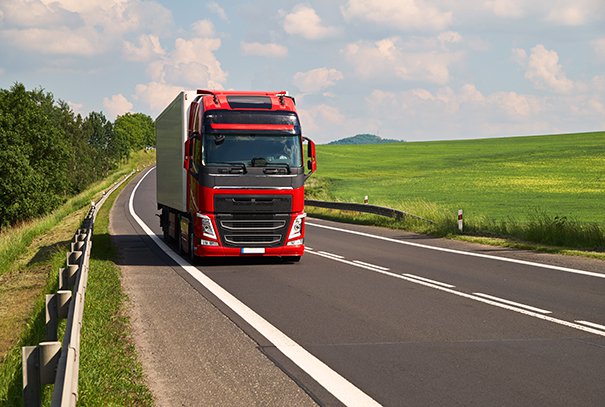
Following a period of consultation, the DfT has announced a total of 33 updates and two new rules in the Highway Code, which received parliamentary approval in September 2021.
It’s the first time in a decade that there have been any revisions to the Highway Code, and the changes mainly focus on giving greater priority to pedestrians and cyclists as the most vulnerable road users. These proposed changes form part of the DfT’s £338 million investment strategy to encourage walking and cycling as sustainable travel choices.
The road user hierarchy
One of the key changes to the Highway Code is a hierarchy of road users—based on the premise that those with the potential to do the greatest harm to others should bear the greatest responsibility to reduce the danger they may pose to fellow road users. In order of priority, the hierarchy will be: pedestrians; cyclists; horse riders; motorcyclists; cars/taxis; vans/minibuses, and—right at the bottom—large passenger and heavy goods vehicles.
This is particularly significant for drivers working in construction, as this sector typically has large vehicles and items of plant, which are licensed for road use. With vehicles such as mobile cranes, earth movers, and tipper lorries needing to use public highways, this puts drivers in the construction sector firmly at the bottom of the hierarchy. Essentially, it means that they are one of the main groups of drivers (along with hauliers) who carry the greatest responsibility to ensure the safety of other road users.
Guidance on right of way and safe passing
A couple of other notable amends focus on pedestrians, horse riders and cyclists. There is greater clarity around pedestrian priority, emphasising that drivers and riders should give way to pedestrians crossing—or waiting to cross—the road. There is also updated guidance on safe passing distances and speeds when overtaking cyclists or horse riders, and ensuring they have right of way at junctions when travelling straight ahead.
Construction vehicles, in particular, can be daunting to pedestrians and cyclists. In turn, pedestrians and cyclists can sometimes be difficult for drivers of larger vehicles to spot when slowing or waiting at junctions. Drivers should therefore ensure they take greater care when passing more vulnerable road users, giving them sufficient space, and allowing right of way when necessary.
No replacement for diligence
The concept of road user priority/hierarchy is not new—it’s already well-established in many European countries. However, its purpose is to encourage a culture of safety on the roads, rather than give priority to those users at the top of the hierarchy in every situation. It is not designed to replace the need for all road users to be diligent. The same goes for the rules around right of way, especially bearing in mind that the majority of road users will not regularly read the Highway Code, and so may not be aware of what the changes might mean when it comes to altering their own behaviour on the road.
Bearing in mind the potential issue of clarity around these new rules, there may be questions on what this could mean from a liability perspective for drivers of heavy goods vehicles and other commercial vehicles—in construction and other industry sectors.
A greater burden of responsibility?
Claimants can often point to a failure to comply with the Highway Code to help establish liability in road traffic accident claims. So, with these new rules in place, would liability immediately attach to larger vehicles in the event of a collision with a road user further up the hierarchy? This may be a valid concern for managers of vehicle fleets—especially those with large vehicles—as well as the drivers themselves. There may also be concern that HGV drivers could face tougher penalties than car drivers or motorcyclists for breaking the same law.
Time will tell how effectively these changes will be adhered to by roads users, but if they do lead to cases of assumed liability against larger vehicles, the question is, how will insurers respond? Will this greater burden of responsibility lead to increased insurance premiums for those vehicles, simply because they fall within the lowest tier of the road user hierarchy?
These changes have come at an already challenging time for industries such as construction that are experiencing a shortage of HGV drivers, which has led to higher rates of pay. So, another concern might be that the increase in driver responsibility may lead to the expectation of a further salary boost to reflect the greater risk a driver would potentially be taking on.
Help protect your drivers and business
Ultimately, all road users should be aware of and understand the new rules, because any confusion may cause otherwise avoidable collisions. This, in turn, may lead to an increase in claims and the potential for knock-on effect on insurance premiums. While every road user is required to behave responsibly, every company with commercial vehicles must also take responsibility for educating their drivers to ensure safer driving and help protect against potential issues of liability and litigation.
The full revised Highway Code wording can be found here.
The sole purpose of this article is to provide guidance on the issues covered. This article is not intended to give legal advice, and, accordingly, it should not be relied upon. It should not be regarded as a comprehensive statement of the law and/or market practice in this area. We make no claims as to the completeness or accuracy of the information contained herein or in the links which were live at the date of publication. You should not act upon (or should refrain from acting upon) information in this publication without first seeking specific legal and/or specialist advice. Arthur J. Gallagher Insurance Brokers Limited accepts no liability for any inaccuracy, omission or mistake in this publication, nor will we be responsible for any loss which may be suffered as a result of any person relying on the information contained herein.


